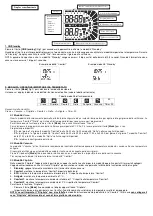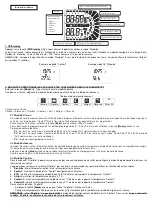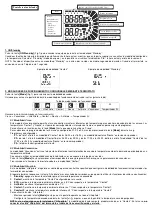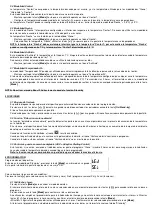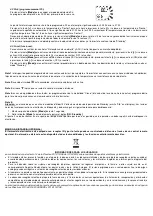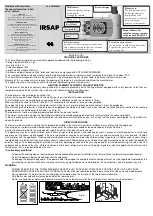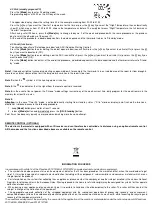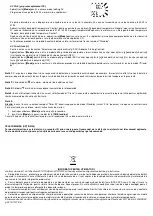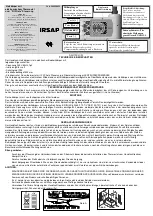
4.2 Pro9 (weekly program P3):
Press the
[Mode]
key to enter P3 editing mode:
Programming begins at 00:00 on the first day of the week.
The upper side display shows the setting time 00 in the example, meaning from 00:00 to 01:00.
Press the
[+]
key if you want the “Comfort” temperature for this time or press the
[-]
key if you want the "Night" temperature, then automatically
show 01 which means from 01:00 to 02:00, choose the temperature as before. The empty bar means "Night" temperature, the full bar means
“Comfort” temperature.
After having set all 24 hours, press the
[Mode]
key to change to day no. 2 of the week and proceed with the same procedure as the previous
day to set all the other days of the week (7).
At the end of the procedure, a double beep confirms the data acquired and the thermostat returns to “Stand-by” mode.
4.3 Funct (functions):
To activate or deactivate “Detect open window” and ASC (Adaptive Starting Control).
Press the
[Mode]
button to enter editing, the detect open window icon will flash: press the
[+]
key if you want to activate (On) or press the
[-]
key if you want to deactivate (Off);
Press the
[Mode]
button to enter editing, now the ASC icon will flash: press the
[+]
key if you want to activate (On) or press the
[-]
key if you
want to deactivate (Off);
Press the
[Mode]
button to confirm; at the end of the procedure, a double beep confirms the data acquired and the thermostat returns to “Stand-
by” mode.
Note 1:
the device might not succeed in detecting an open window if, for example, the thermostat is in an isolated area of the room, far from draughts,
close to an external source of heat or if the temperature variation in the room is too slow.
Note 2:
when the
symbol is lit, the heating element is active.
Note 3:
the
icon indicates that the signal from the remote control is received.
Note 4:
in the event of loss of power, the “Chrono” mode settings (current day of the week, current time, daily program for the week) remain in the
memory for at least 5 minutes.
Note 5:
Attention:
in the case "Timer 2h" mode is activated directly starting from stand-by status ("S t b" word on display) and, finished the two hours,
electronics is blocked, execute the following procedure:
1. keep
[Mode]
button pressed for at least 1 second;
2. release
[Mode]
button and immediately press the
[ON / Stand-by]
button.
Point 2 must be done very quickly so we recommend making more than one attempt.
REMOTE CONTROL (OPTIONAL)
The electronic thermostat is equipped with an IR receiver and can therefore be controlled at a distance using an optional remote control.
All the modes and the functions described above are available on the remote control.
INFORMATION FOR USERS
in accordance with article 14 of the Directive 2012/19/EU of 07/07/2012 on waste electrical and electronic equipment.
•
The symbol shown above, present also on the equipment, indicates that it has been placed on the market and that, when the user decides to get
rid of it, it must be disposed of in separate waste collection (including all the components, sub-assemblies and consumer materials which are an
integral part of the product).
•
For information on the systems for collecting these appliances, please contact the company or another subject enrolled in the various National
Registers for other countries in the European Union. Waste produced in the home (or of similar origin) may be consigned to systems for the separate
collection of urban waste.
•
When buying a new appliance of an equivalent type, it is possible to hand over the old equipment to the seller. The seller will then contact the
subject in charge of the collection of the equipment.
•
The appropriate separate collection of the scrapped equipment and the subsequent operations of processing, recovery and environment-
compatible disposal, allows the avoidance of potential negative effects on the environment and on human health, while favouring the recycling and
recovery of the component materials.
The unauthorised disposal of the product by the user entails the application of the sanctions contemplated under the national approval of Directives
2011/65/EU, 2008/98/EC and 2015/1127/EU.

